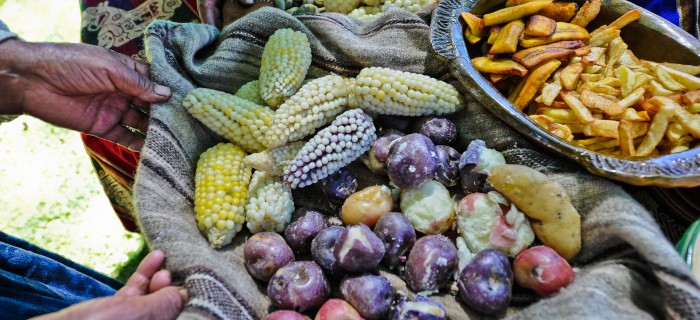12 Myths About Hunger
Food First Backgrounder, Summer 2006, Vol. 12, No. 2
Why so much hunger? What can we do about it?
To answer these questions we must unlearn much of what we have been taught. Only by freeing ourselves from the grip of widely held myths can we grasp the roots of hunger and see what we can do to end it.
Myth 1: Not Enough Food to Go Around
Reality: Abundance, not scarcity, best describes the world’s food supply. Enough wheat, rice and other grains are produced to provide every human being with 3,200 calories a day. That doesn’t even count many other commonly eaten foods – vegetables, beans, nuts, root crops, fruits, grass-fed meats, and fish. Enough food is available to provide at least 4.3 pounds of food per person a day worldwide: two and half pounds of grain, beans and nuts, about a pound of fruits and vegetables, and nearly another pound of meat, milk and eggs – enough to make most people fat! The problem is that many people are too poor to buy readily available food. Even most “hungry countries” have enough food for all their people right now. Many are net exporters of food and other agricultural products.
Myth 2: Nature is to Blame for Famine
Myth 3: Too Many People
Stay in the loop with Food First!
Get our independent analysis, research, and other publications you care about to your inbox for free!
Sign up today!Myth 4: The Environment vs. More Food?
Myth 5: The Green Revolution is the Answer
Myth 6: We Need Large Farms
Myth 7: The Free Market Can End Hunger
Myth 8: Free Trade is the Answer
Myth 9: Too Hungry to Fight for Their Rights
Myth 10: More U.S. Aid Will Help the Hungry
Myth 11: We Benefit From Their Poverty
Myth 12: Curtail Freedom to End Hunger?


 Help Food First to continue growing an informed, transformative, and flourishing food movement.
Help Food First to continue growing an informed, transformative, and flourishing food movement.




